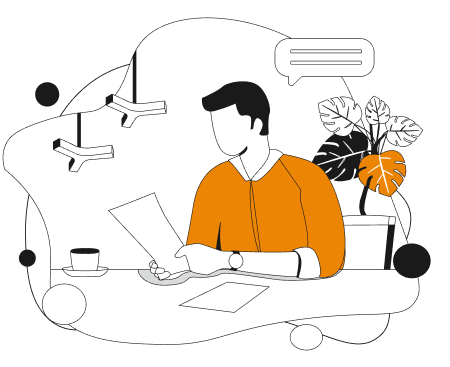
As technology continues to evolve, understanding how advanced models like ChatGPT are trained is crucial for appreciating their capabilities and limitations. ChatGPT, a product of OpenAI, is based on the GPT architecture, specifically designed for natural language processing. This article breaks down the training process, how ChatGPT works, its advantages and limitations, and what improvements could enhance its functionality.
The Training Process of ChatGPT
ChatGPT’s training process is rooted in the foundational principles of language modeling and fine-tuning. The model was trained on massive datasets, including text from books, articles, and websites. One of the key datasets used is the Common Crawl, a publicly available collection of billions of web pages. This dataset provides a vast and diverse range of language and topics, essential for building a robust language model.
But the Common Crawl is just the beginning. OpenAI also utilized other datasets such as Wikipedia, news articles, and books, enhancing the model’s ability to understand and generate human-like text. The diversity of these datasets plays a significant role in shaping the model’s ability to respond to a wide array of queries.
How ChatGPT Works: Training the Model
ChatGPT’s performance heavily depends on its training data. Before diving into how it generates responses, it’s essential to understand the pre-processing steps involved in training. These include:
- Tokenization: The text is split into individual words or subwords, which are then converted into numerical data.
- Normalization: This step converts the text to lowercase and removes punctuation and special characters, ensuring consistency in the input data.
The model itself is built on the Transformer architecture, a neural network designed to process sequences of data, such as sentences or paragraphs. The architecture consists of multiple layers of computation, where the input is transformed into feature vectors. These vectors undergo several layers of self-attention and feedforward neural networks, leading to the generation of output text.
The training process is optimized using backpropagation, a technique that adjusts the neural network’s weights based on the difference between predicted and actual outputs. The model’s accuracy improves over time as it is trained on multiple epochs, refining its ability to generate coherent and relevant responses.
How ChatGPT Generates Responses
When a user inputs a message, ChatGPT’s response generation can be understood in two main phases:
- Language Understanding Component: The input text is converted into a numerical representation that captures its semantic and syntactic meaning. This representation is then fed into the language generation component.
- Response Generation: The model considers the input message, its context, and the conversation history to generate the most appropriate response. ChatGPT uses a technique called beam search to generate multiple possible responses, scoring them based on fluency, coherence, and relevance. The response with the highest score is selected for output.
Advantages and Limitations of ChatGPT
While ChatGPT offers remarkable capabilities, it also comes with certain limitations. Here’s a breakdown:
Advantages:
- Large Knowledge Base: Trained on extensive datasets, ChatGPT can accurately answer a wide range of questions across various domains.
- 24/7 Availability: Unlike human counterparts, ChatGPT operates around the clock, providing consistent and reliable answers at any time.
- Multilingual Support: ChatGPT can communicate in multiple languages, making it accessible to a global audience.
- Scalability: Capable of handling countless users simultaneously, ChatGPT is suitable for large-scale applications.
Limitations:
- Knowledge Cutoff: ChatGPT’s knowledge is limited to the information it was trained on, potentially lacking the latest updates or information.
- Contextual Understanding: The model may struggle with understanding the full context of a conversation, leading to inaccurate or irrelevant responses.
- Biased Responses: Since ChatGPT’s training data may contain biases, the model can inadvertently produce biased outputs.
- Lack of Emotional Intelligence: ChatGPT lacks the ability to understand or respond with empathy, making it less effective in emotionally sensitive interactions.
- Security Concerns: The use of ChatGPT raises privacy and security concerns, particularly in protecting user data from malicious use.
How ChatGPT Can Be Improved
Despite its strengths, there are areas where ChatGPT can be enhanced:
- More Diverse Training Data: Incorporating more diverse and inclusive datasets can help reduce biases in the model’s responses.
- Enhanced Contextual Understanding: Improving the model’s ability to grasp the context, including sarcasm and idiomatic expressions, would lead to more accurate responses.
- Improved Emotional Intelligence: Developing the model’s ability to detect and respond to emotions could make it more effective in human-like interactions.
- Continuous Training: Regular updates and fine-tuning with new data would keep the model relevant and accurate.
- Personalized Responses: Customizing responses based on user preferences could enhance user engagement and satisfaction.
- Enhanced Security: Strengthening encryption, authentication, and access controls would address privacy and security concerns.
Conclusion
ChatGPT represents a significant leap in natural language processing, offering numerous advantages in various applications. However, understanding its training process, advantages, and limitations is crucial for effectively leveraging this technology.
Contact Us
At Asambhav Solutions, we specialize in developing cutting-edge applications like ChatGPT-based apps, leveraging our expertise in MERN stack, AWS, and more. If you’re interested in integrating advanced AI solutions into your business, we’d love to discuss how we can help.
Talk soon!
Shreyan Mehta
Founder, Asambhav Solutions



